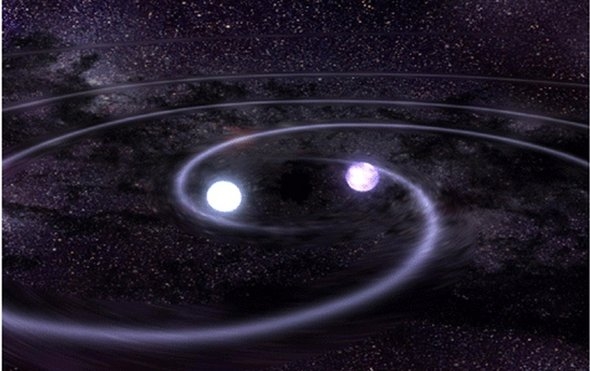Lightweight Double Neutron Star Found

Artist’s animation of a pair of neutron stars locked in a binary orbit. [NASA/Dana Berry, Sky Works Digital ]
More than forty years after the first discovery of a double neutron star, we still haven’t found many others — but a new survey is working to change that.
The Hunt for Pairs
In 1974, Russell Hulse and Joseph Taylor discovered the first double neutron star: two compact objects locked in a close orbit about each other. Hulse and Taylor’s measurements of this binary’s decaying orbit over subsequent years led to a Nobel prize — and the first clear evidence of gravitational waves carrying energy and angular momentum away from massive binaries.
Forty years later, we have since confirmed the existence of gravitational waves directly with the Laser Interferometer Gravitational-Wave Observatory (LIGO). Nonetheless, finding and studying pre-merger neutron-star binaries remains a top priority. Observing such systems before they merge reveals crucial information about late-stage stellar evolution, binary interactions, and the types of gravitational-wave signals we expect to find with current and future observatories.
See full text
Read also
Rapid-response program to explore a double neutron star merger